Greece’s capital city Athens is Europe’s oldest capital and is a city that has drawn visitors from far and wide for centuries. The city originated 3400 years ago and is steeped in mythology from Hesiod and Homer, with landmarks in Athens that tell the story of the city.
According to one legend, gods Athena and Poseidon wanted to be guardians of the city. So they decided they should each offer a gift to the gods and the people. Athena presented an olive tree, which the people chose over Poseidon’s offering of saltwater. So Athena became the cities guardian and gave the city her name.
The city has so much history both above and below the surface. During the construction of the Athens Metro in the build-up to the 2004 Olympic Games, one of the most significant pockets of archeology opened up. More than 50,000 artefacts were excavated and some were donated for museums, while the rest are displayed in six metro stations. So if a city break in a fascinating place in Europe is what you are after, look no further than Athens. Here are 20 amazing landmarks in Athens to tick off your bucket list.
Contents
20 Athens Landmarks
Historic Landmarks in Athens
1- Panathenaic Stadium
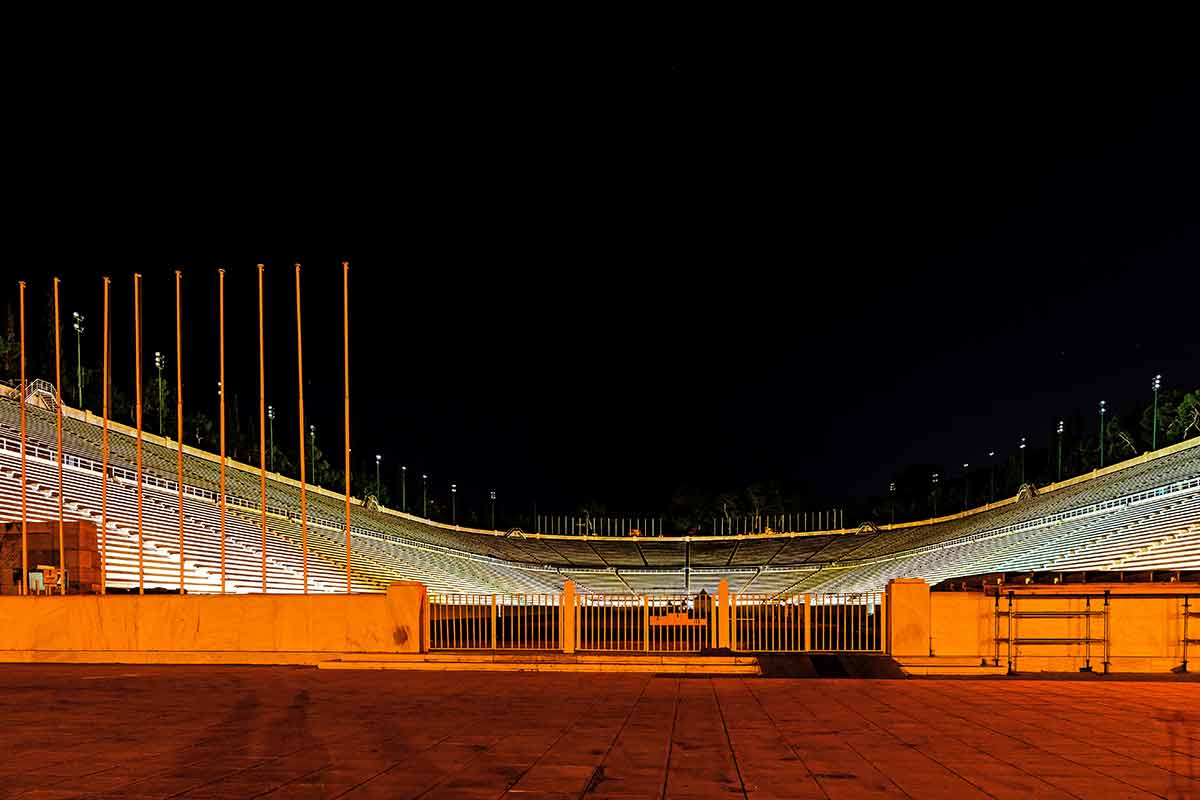
The Great Orator Lycurgus ordered the building of the Panathenaic Stadium during the 5th century BC.
The stadium was originally rectangular in structure and was designed as a venue to host the Panathenaic Games. It opened in 330 BC.
Over the centuries, the stadium was modified to suit new purposes.
In the 2nd century AD, Emperor Hadrian remodelled the stadium into a horseshoe shape to mirror the stadiums of Rome.
The Panathenaic Stadium became the home of the modern Olympics and is where the first modern Olympic Games was held in 1896.
The stadium is the only stadium in the world to be built entirely from marble.
Panathenaic Stadium is at Leof. Vasileos Konstantinou, Athina, 116 35.
Also read:
- 20 Movies About Greece
- 20 Incredible Greek Landmarks
- 20 Famous Landmarks In Athens
- 20 Fairytale Castles In Greece
- When To Visit Greece
- 20 Beaches In Greece
- 20 Things To Do At Night In Athens
- 20 Day Trips From Athens
- 20 Cities In Greece You Will Love
- 20 Best Beaches in Mykonos
- A Guide To Winter In Greece
- 20 Things To Do In Mykonos
- 20 Things To Do In Rhodes
- Where To Stay In Athens
- 20 Museums in Athens
- 20 Things To Do In Santorini
- Best Greek Islands To Visit
- Car Rental Athens Tips
- Car Rental Mykonos Tips
- Where To Stay In Crete
- 20 Greece Tours For Your Bucket List
- 15 Things Greece Is Famous For
- 10-day Greece Itinerary
2- Temple of Olympian Zeus
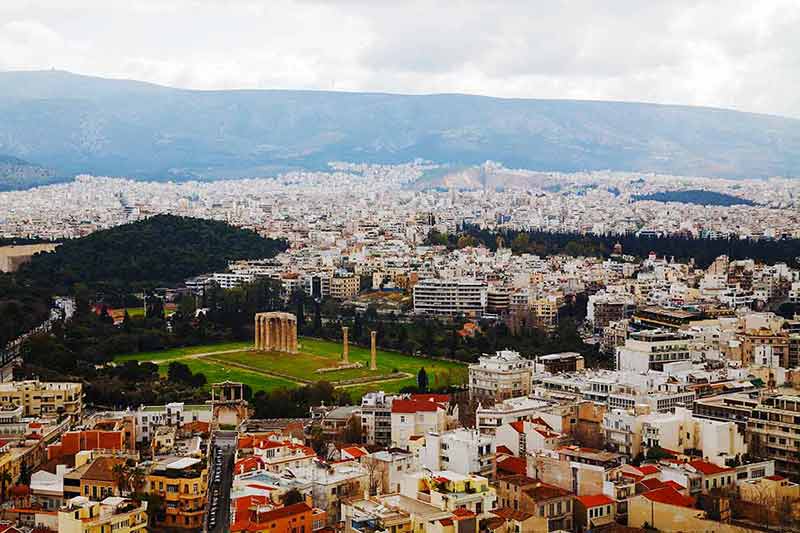
The Temple of Olympian Zeus is a half-ruined temple standing in the centre of Athens.
The temple is dedicated to Zeus, who was the leader of the Olympian Gods.
Antistates, Callaeschrus, Antimachides and Porinus, all architects in the 6th century BC, were tasked with designing the temple.
Construction on the temple stopped in 510 BC when political disruption dispelled the ruling tyrant Hippias.
It took more than 300 years for construction to begin again.
The following centuries saw much change to the temple, as Roman Emperor Hadrian added his touches before the city was sacked, subject to storm damage and even war.
Today the temple has 15 of its columns standing, with a 16th laying where it fell.
Temple of Olympian Zeus is at Athens, 105 57.
For more amazing European Landmarks, read:
- 30 Spain Landmarks
- 20 Switzerland Landmarks
- 22 Germany Landmarks
- 35 London Landmarks
- 30 France Landmarks
- 20 Italy Landmarks
- 20 Greece Landmarks
- 20 Russia Landmarks
- 20 Scotland Landmarks
- 20 Ireland Landmarks
- 21 Wales Landmarks
- 20 Turkey Landmarks
- 20 England Landmarks
- 20 Hungary Landmarks
- 21 Romania Landmarks
- 20 Ukraine Landmarks
- 20 Athens Landmarks
- 20 Rome Landmarks
- 20 England Landmarks
- 20 Portugal Landmarks
- 20 Poland Landmarks
- 20 Iceland Landmarks
- 20 Bulgaria Landmarks
- 21 Croatia Landmarks
- 20 Bulgaria Landmarks
- 20 Austria Landmarks
- 21 Finland Landmarks
- 20 Sweden Landmarks
- 20 Denmark Landmarks
- 20 Belgium Landmarks
- 20 Netherlands Landmarks
- 20 Barcelona Landmarks
- 21 Czech Republic Landmarks
- 20 Landmarks in Paris
- 20 Landmarks in Liverpool
- 10 Istanbul Landmarks
3- Roman Agora
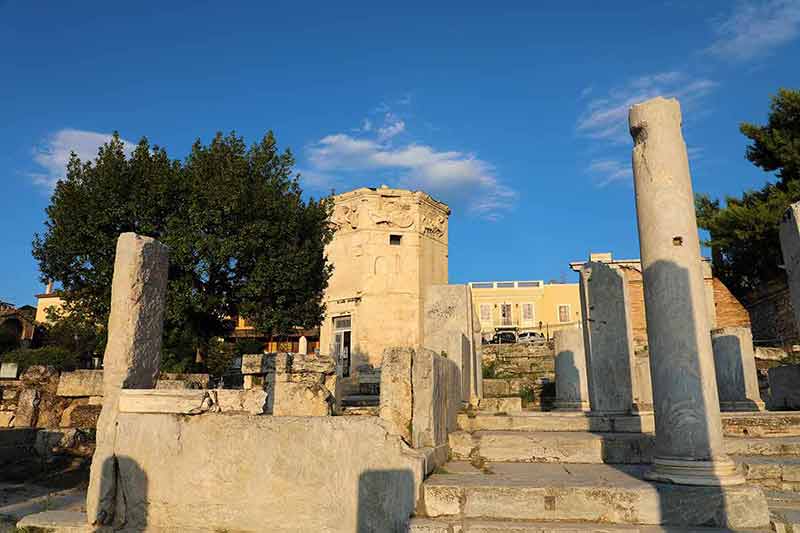
Unlike the Ancient Agora, the Roman Agora served not as a place for politics but as an open market.
Archeologists believe the Roman Agora was built during the 1st century BC.
Julius Caesar and Augustus ordered its creation.
The Agora featured shops on the eastern side and a fountain on the southern side.
One of the entrances to the Agora leads to the Tower of Winds, a building used to tell the time and predict the weather.
Roman Agora is at Polignotou 3, Athina 105 55.
4- Mount Lycabettus
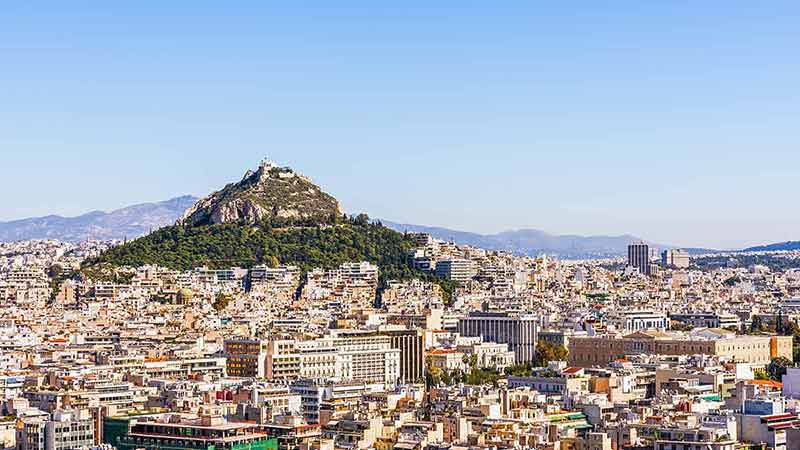
Mount Lycabettus towers at 227m (745ft) above the city of Athens and is the city’s highest point.
The hill’s summit can be reached either by a circular walk that takes in incredible views of the city or through travelling by a funicular which sadly runs entirely within a tunnel.
Head to the top of the mountain at sunset to see the ancient ruins of Athens lit up.
The summit also offers incredible views over the Aegean Sea.
Mount Lycabettus is at Athens, 114 71.
5- The Greek Parliament
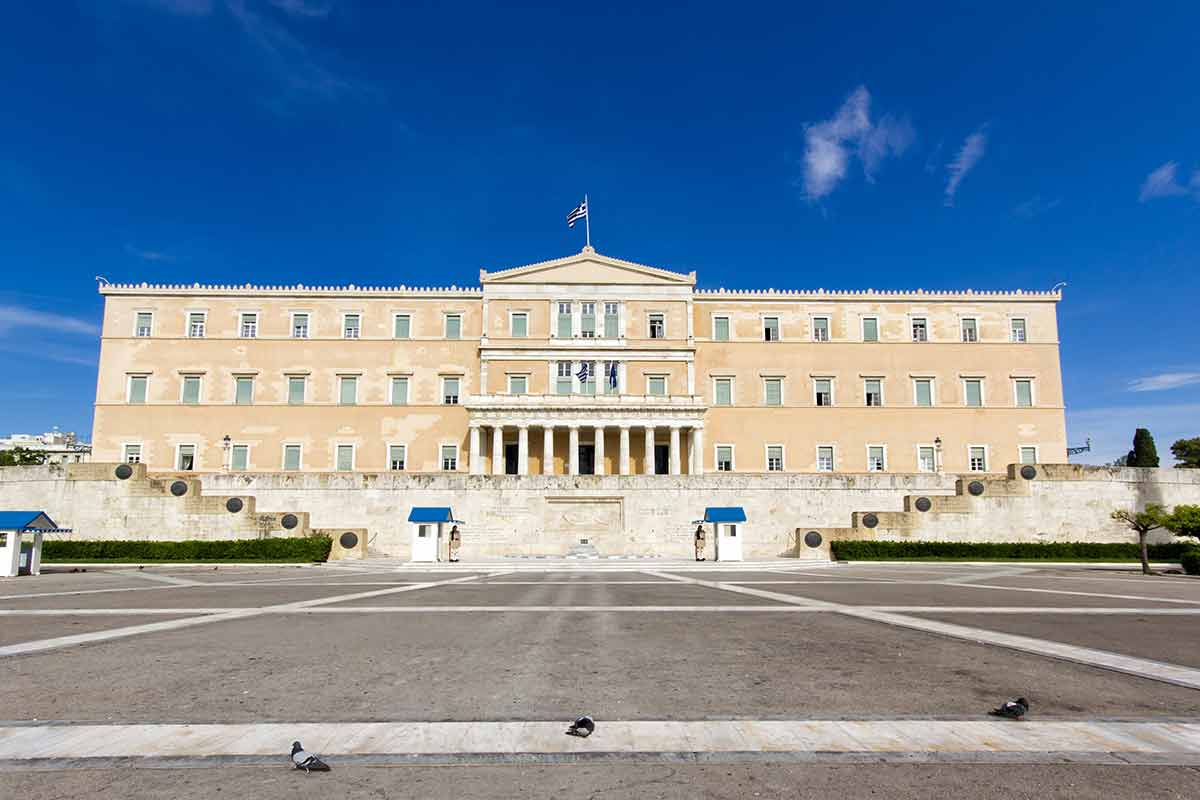
The Greek Parliament, or Hellenic Parliament, overlooks Syntagma Square.
The building still serves as a functioning parliament building, however, tours inside are permitted.
Visit Eleftherios Venizelos Hall, which survived the great fire of 1909.
Built in 1843, the hall was a trophy room with golden candelabras shaped like crowns.
Within Venizelos Hall is a 78m (256ft) frieze.
Ludwig Michael von Schwanthaler, a German sculptor, painted the frieze in the 1840s.
It portrays Greece’s liberation during the revolution between 1821 to 1832.
The Greek Parliament is at Athens 105 57.
6- Anafiotika
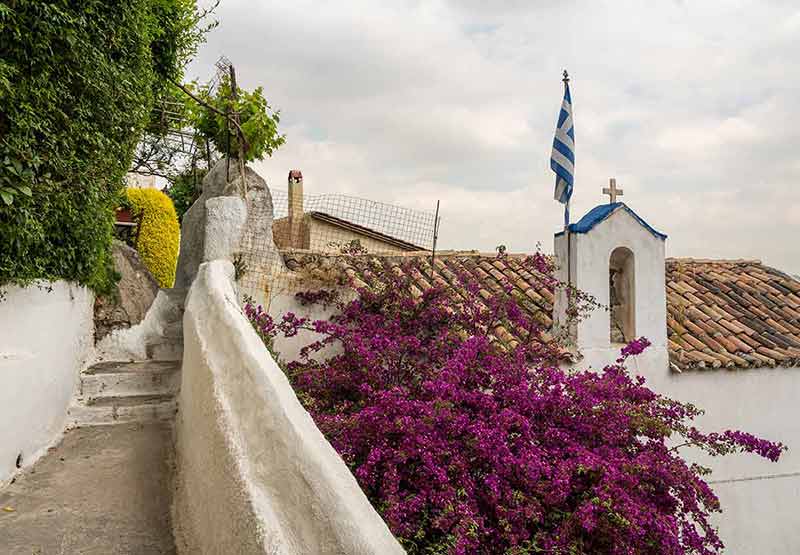
Anafiotika is a small neighbourhood in Plaka which is a true hidden gem when visiting the city.
Much of the area was destroyed to make room for archeological excavations in the 1950s.
However, these days, the area is filled with greenery, open spaces and beautiful colourful blue and white buildings.
The narrow cobbled streets offer a welcome place to get lost within the city’s history without the vast crowds.
The area offers views over Lycabettus Hill and the many ruins of ancient Athens.
Anafiotika is close to the Acropolis of Athens.
7- Aeropagus
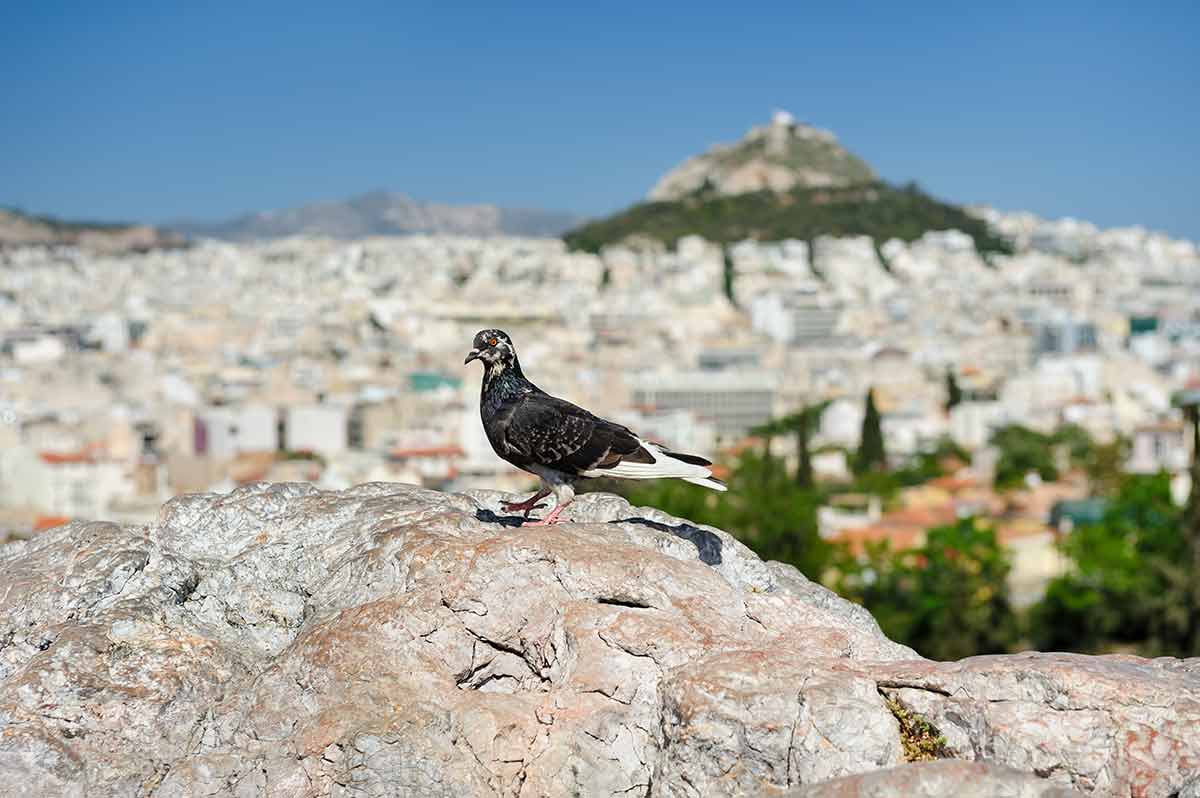
Aeropagus was once the site of the Council of Nobles and the Judicial Court.
It’s near the entrance of the Acropolis, and the hill is also known as the Hill of Ares.
According to Greek mythology, Ares was tried on the hill by the Gods for murdering Alirrothios, a son of Poseidon.
The hill has been the site of meetings for city elders, a campsite for the Persians during the siege of the Acropolis in 480BC, and even the site of a saintly visit.
During the reign of the Romans, Saint Paul preached his ‘Sermon on an Unknown God’.
A bronze plaque has been placed at the foot of the rock to commemorate this.
Aeropagus is at Athens 105 55.
8- The Athens Trilogy
The Athens Trilogy is a group of three neoclassical buildings – the Academy, the University of Athens and the National Library.
The three buildings form an impressive complex adorned with columns and statues from the cities ancient past.
The buildings are fronted with statues of Athena and Apollo, who serve as guards.
King Otto, a German who ruled Greece shortly after its independence from the Ottoman Empire, wanted to renovate the city as a place of learning and philosophers.
The trilogy’s creation served as a bridge between the city’s ancient past and its modern developments.
The Athens Trilogy is at 28 Eleftheriou Venizelou Ave, Athina 106 79.
9- Panagia Kapnikarea Church
Panagia Kapnikarea Church is one of Greece’s oldest Greek Orthodox churches and a beautiful example of Byzantine architecture.
The church was constructed in the early 11th century on the grounds of a former temple for Athena or Demeter.
The church was intended to be demolished during King Otto’s reign but King Ludwig of Bavaria intervened to save it.
Panagia Kapnikarea Church is at Pl. Kapnikareas, Athina 105 63.
10- The Acropolis Museum
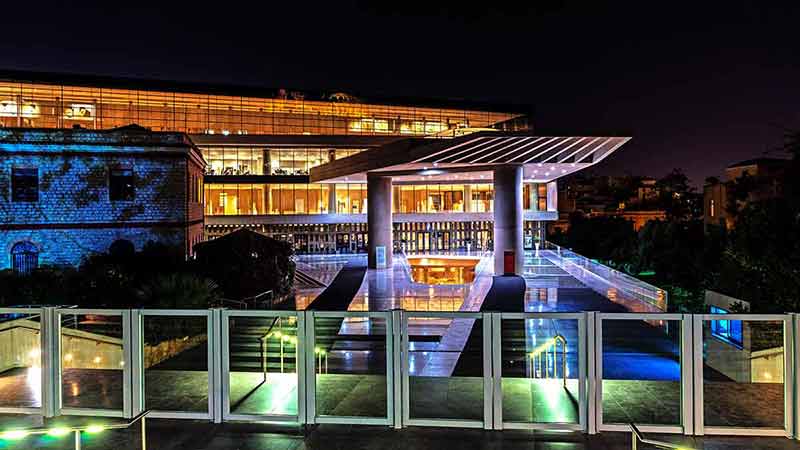
The Acropolis Museum is an archeological museum that houses significant and famous artefacts from the Acropolis.
The museum contains more than 3000 artefacts and lies to the southeast of the Acropolis.
An audio guide talks tourists through life on the Acropolis hill from prehistoric times until the end of Antiquity.
The museum has been designed with glass walls that face the Acropolis and the hills that surround it.
Areas of the floor are also glass with illuminated secretions showing areas of excavation and ruins.
The Acropolis Museum is at Dionysius Areopagitou 15, Athina 117 42.
Landmarks in Athens Acropolis
11- Acropolis of Athens
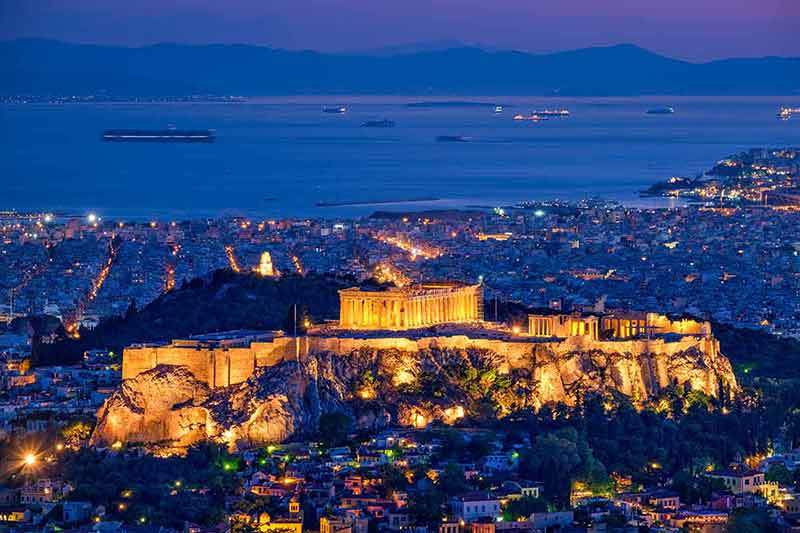
The word ‘Acropolis’ comes from the Greek words meaning ‘highest point’ and ‘city’.
The Acropolis sits on a 156m (512ft) hill, offering incredible views over the rest of the ancient site and city.
People have lived on this hill since the 4th century BC and many of its buildings date back to the 5th century BC.
Pericles ordered the construction of many of the sites within the area.
The first religious temple built within the Acropolis was in the 8th century BC, with many more temples following in suit.
This UNESCO World Heritage gem is surrounded by fortified walls built more than 3300 years ago.
Wander through these ancient ruins and explore some of the most incredible sites the ancient city has to offer.
The Acropolis of Athens is at Athens 105 58.
12- Parthenon
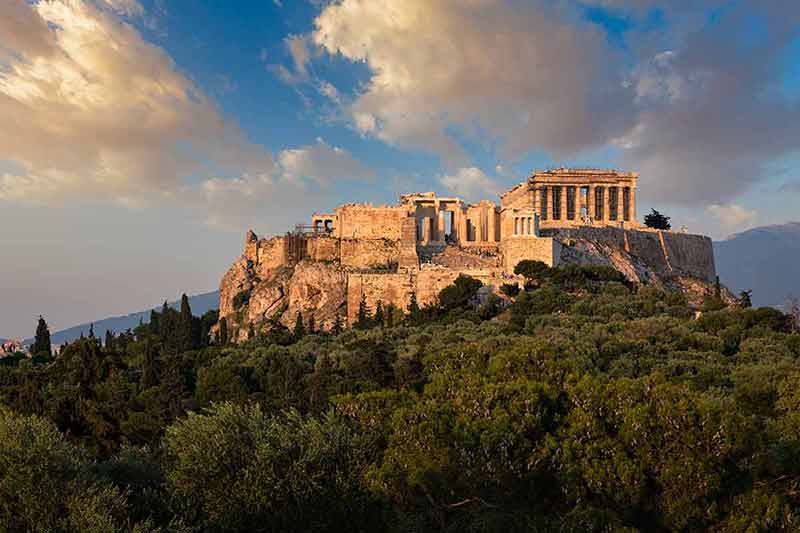
Parthenon is the most famous historical landmark in Athens, a temple dedicated to the goddess Athena.
It was constructed in 447BC and completed in 438BC.
The Parthenon is the most famous building that survived from Ancient Greece thanks to its decorative sculptures and links to Athena, who gave the city her name.
Parthenon has not always been used as a temple.
It was used as a treasury during the Delian League and converted into a Christian Church to worship the Virgin Mary in the 6th century AD.
Parthenon is at Athens 105 58.
13- Temple of Athena Nike
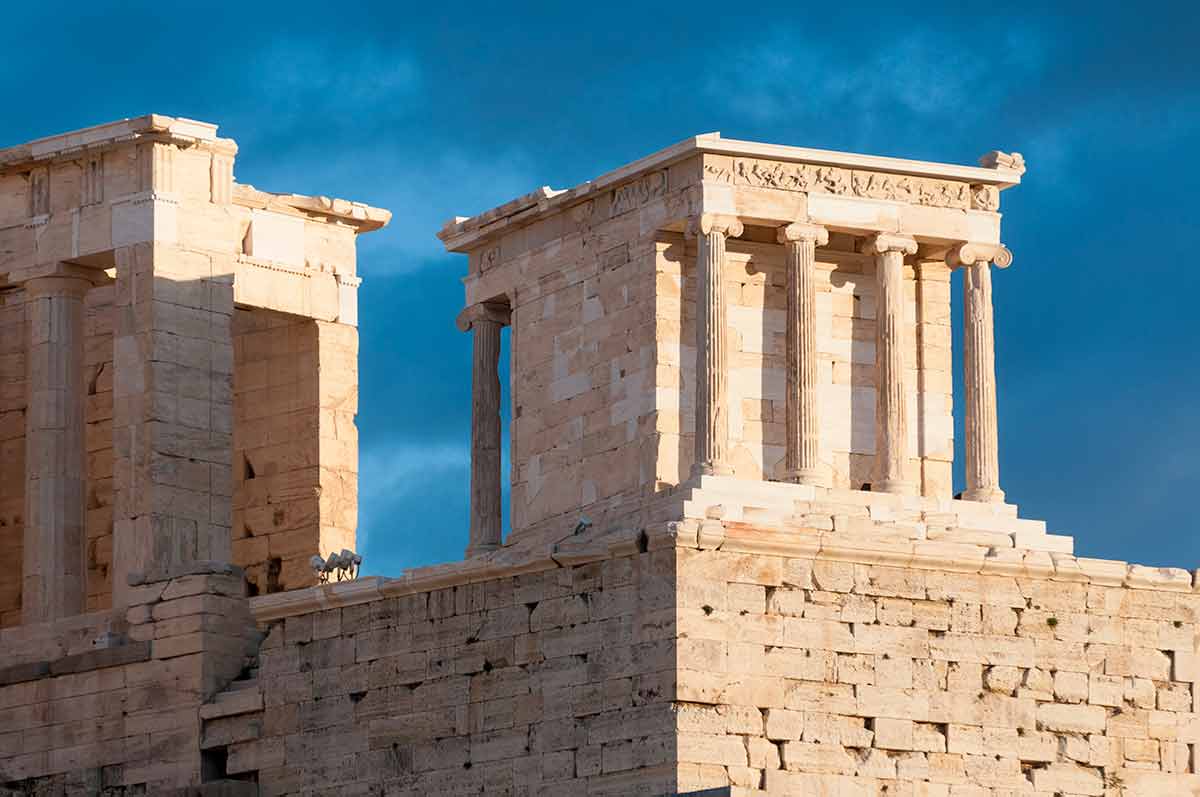
Another incredibly famous site within the Acropolis is the Temple of Athena Nike, the smallest temple in the Acropolis.
The temple was built in dedication to goddesses Athena and Nike in 420BC.
It’s perched on a cliff in the southwest corner of the Acropolis.
Despite this location being vulnerable to attack, it served as a critical defensive location thanks to its excellent vantage point.
Archeological digs within the area have unearthed evidence that the site was used for religious rituals during the Mycenaean age, well before the temple was constructed.
Temple of Athena Nike is at Acropolis, Dionysiou Areopagitou, Athina 105 58.
14- Erechtheion
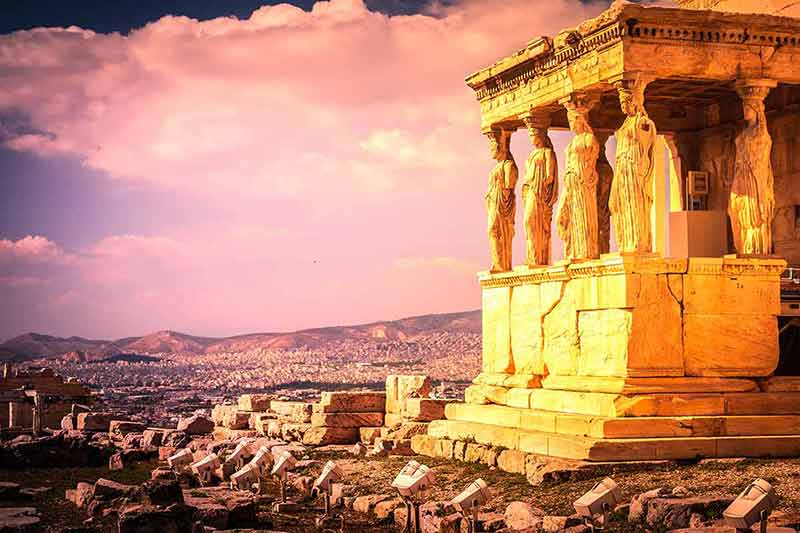
Another key temple within Acropolis is Erechtheion, which was built between 421 and 406 BC.
Demi-god Erechtheus gave the building its name and its purpose was to house an ancient wooden statue of Athena.
As well as serving as a location for the statue, the building was also a shrine for ancient cults who served Erechtheus, his brother Boutes and the first mythical Athenian King Kekrops.
The building was constructed from Pentelic marble, which has a fine grain, is almost pure white but contains iron which has oxidised over time.
This has given the marble a honey colour which is particularly beautiful at sunrise and sunset.
Erechtheion is at Athens 105 58.
15- Theatre of Dionysus
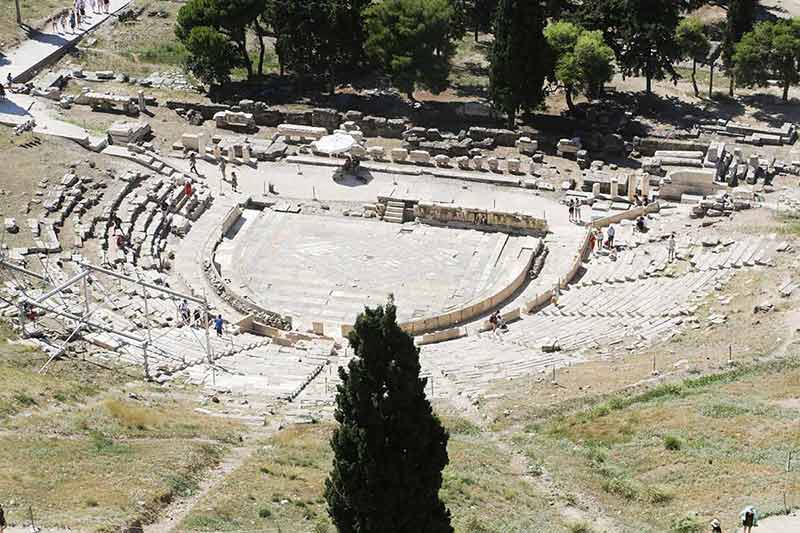
The Theatre of Dionysus is on the southern slope of Acropolis Hill and the birthplace of Greek drama.
The theatre was built into a natural hollow on the side of the hill and was dedicated to Dionysus, the god of winemaking and ecstasy.
It was completed in the 5th century BC and used to perform plays by Aeschylus, Euripides and Sophocles.
The theatre was originally built from wood before being rebuilt in stone during Roman rule.
Only 20 sections of the theatre remain, however they have been remarkably well preserved.
Some of the seats feature inscriptions that signify that elected rulers used them, and other inscriptions identify which seats were for citizens.
Theatre of Dionysus is at Mitseon 25, Athina 117 42.
16- Odeon of Herodus Atticus
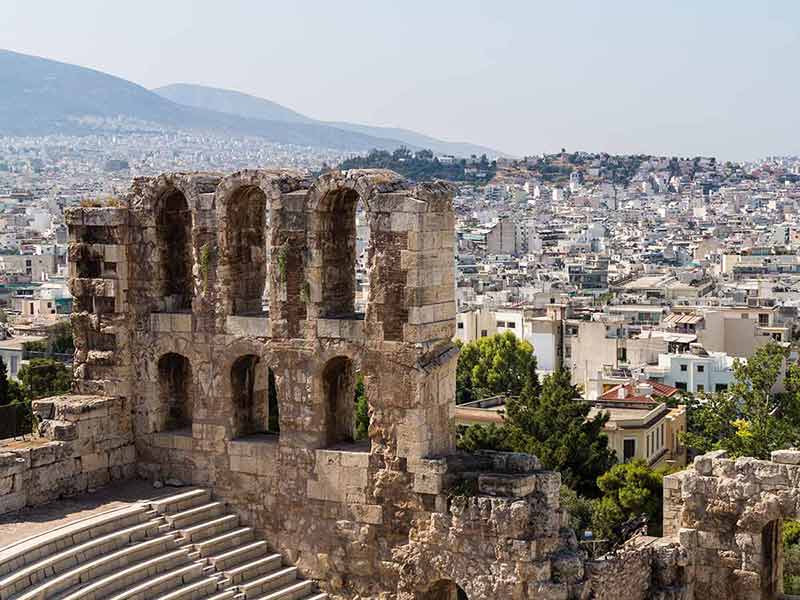
Odeon of Herodus Atticus is a Roman theatre within the Acropolis.
The Odeon is one of the newer buildings within the ancient site, built in 161AD.
The Odeon was designed to serve as a location for musical performances and plays.
The style is distinctively Roman and features roman arches and a tiered seating area forming a semi-circle.
Thanks to extensive renovations in the 1950s, the Odeon has been host to Pavarotti, Frank Sinatra and several Greek plays.
Odeon of Herodus Atticus is at Dionysiou Areopagitou, Athina 105 55.
17- Hadrians Library
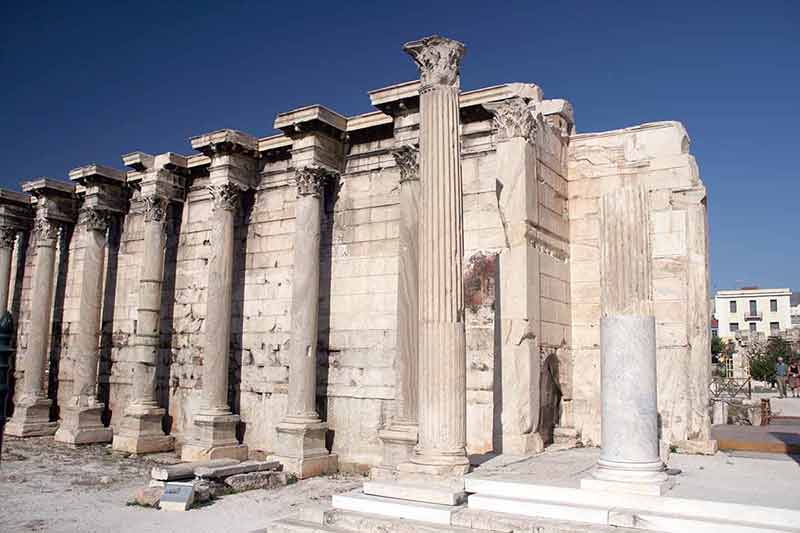
Hadrian’s Library is the largest building to be built by Emperor Hadrian during his rule of Athens in 2nd century AD.
The building housed Hadrians extensive manuscript collection and served as a lecture hall and had music rooms.
It’s typically Roman in its style and features a pool in the centre of the courtyard.
Two churches were added to the site in the 7th and 12th centuries.
Hadrians Library is at K, Aeros 3, Athina 105 55.
18- Kerameikos Cemetery
Kerameikos Cemetery has existed in the Acropolis since 1200BC, long before many of the temples and theatres on the site.
Archeologists have found evidence of cist graves and burial offerings at the site.
Many of the gravesites were discovered during works to create the Kerameikos Metro Station.
As the centuries progressed, the graves moved to the above ground in grander grave mounds and monuments to remember the dead.
Finds in the area also include examples of temples and marble statues from the 5th century BC.
Kerameikos Cemetery is at Ermou, Athina 105 53.
Landmarks in Athens’ Ancient Agora
19- Ancient Agora of Athens

Northwest of Acropolis is the Ancient Agora of Athens, considered to be the best example of an Agora from ancient times.
Agora translates to mean ‘marketplace’, however, it also served as an assembly area, residential area and an area cor commerce for approximately 5000 years.
Due to its age, the Agora has been continually built, renovated and changed to meet the city’s needs.
While much of the Agora is now in ruins, it is still one of the most amazing archeological sites that cannot be missed when visiting Athens.
Ancient Agora of Athens is at Adrianou 24, Athina 105 55.
20- Temple of Hephaestus
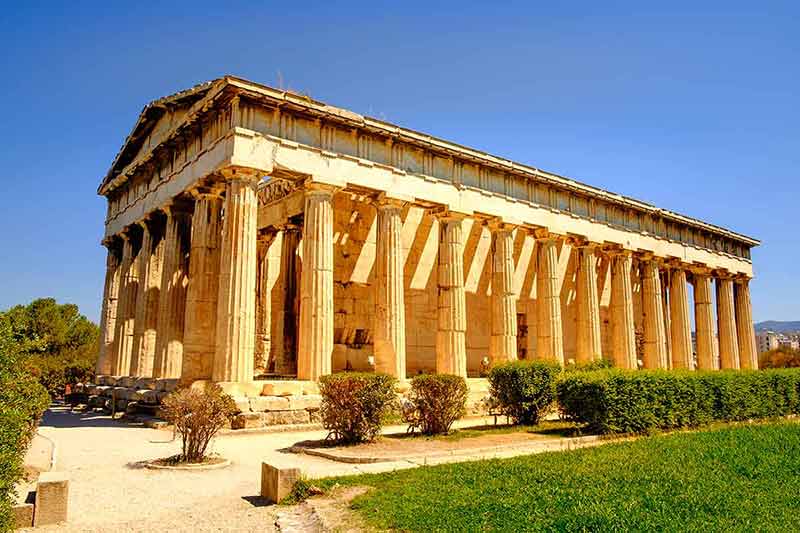
The Temple of Hephaestus is dedicated to Hephaestus, the god of fire, and Athena, the goddess of pottery and crafts.
Archeologists believe the temple was built within the Agora in 450 BC.
Iktinus, an architect who also helped to design Parthenon, designed the temple.
Following its time as a temple dedicated to Greek gods, the Temple of Hephaestus was an Orthodox Church from the 7th century right up to 1834, when King Otto ordered that the temple become a museum.
Today the temple has six columns to the southeast and 13 to the north and south still standing.
Sadly its decorative friezes and carvings have been extensively damaged during earthquakes and invasions.
Temple of Hephaestus is at Athens 105 55.
More Landmarks in Asia:
Plan Your Trip

Rent A Car – Find the best car rental rates at Discover Cars. They compare car hire companies to provide you with the best deal right now.

Find A Hotel – If you’re curious about this article and are looking for somewhere to stay, take a look at these amazing hotels.

